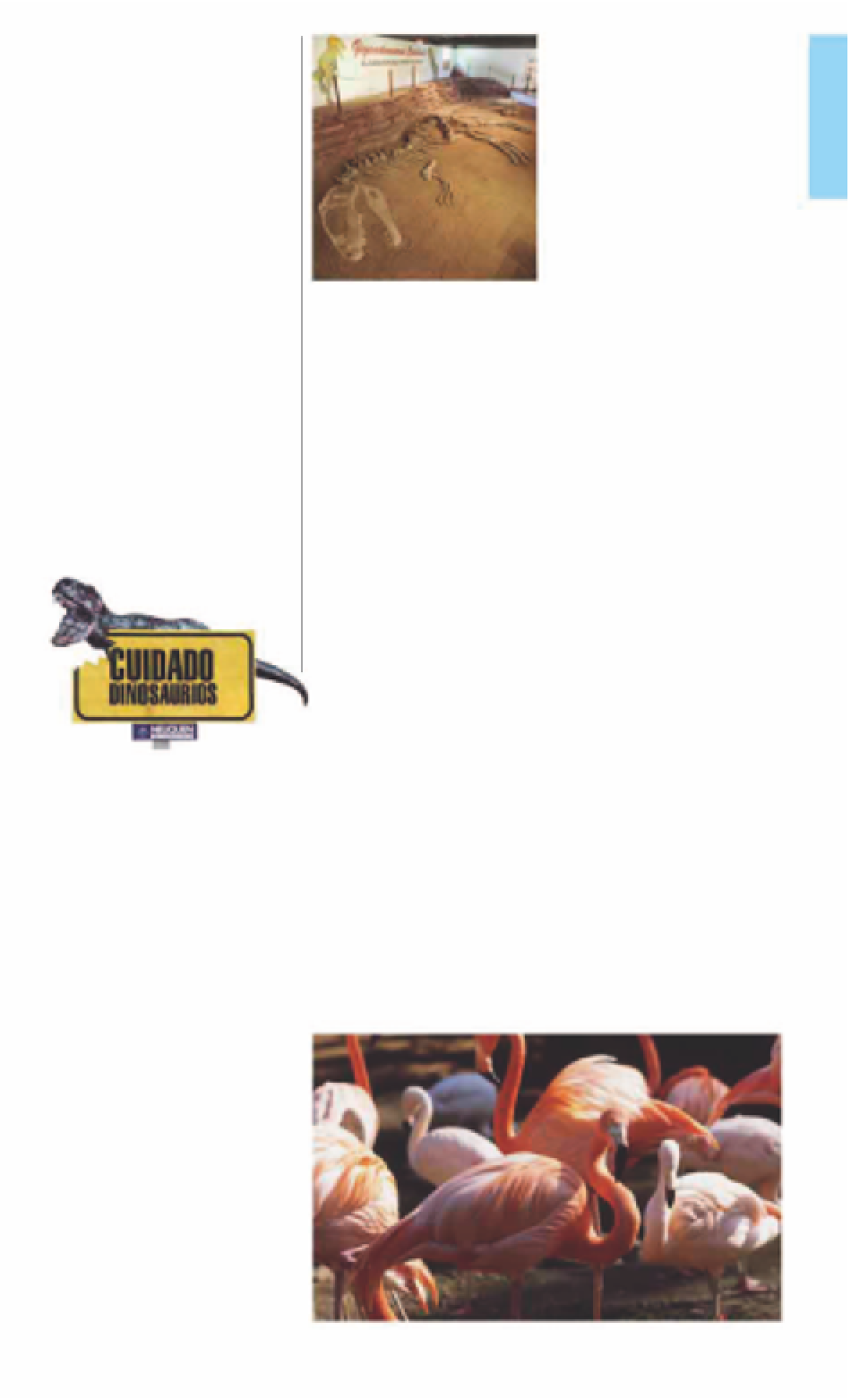Travel Reference
In-Depth Information
paynemili
, thought to be an
important link in the evolution
of dinosaurs to birds. The
fossilized remains of these
and other finds are on display
at the center.
It was created in 1940 to
provide a protective habitat
for the area's large population
of black-necked swans,
which today number over
2,000. Located in the western
reaches of Neuquén province
and surrounded by volcanic
desert, this scenically stunning
park also provides refuge to
over 200 other bird species,
including large colonies of
wading and aquatic birds
such as grebes, sandpipers,
coots, ducks, and flamingos.
These can be sighted in their
thousands along the nature
trail that hugs the western
shore of the park's largest body
of water, the
Laguna Blanca
.
They can be observed at close
quarters particularly during the
southern hemisphere's spring
season, when the elaborate
courtship rituals take place.
The best time to visit the
lagoon is in the morning when
it is far less windy.
Linked by the same trail,
Laguna Verde
, another large
lake within the national park,
is also populated by large
colonies of colorful flamingos
and is an important stopover
site for migrating shorebirds.
Swans are present all year
round but birdlife is best
observed between November
and March.
Activities within the
park include trout fishing but
only by permit, which can be
bought at the visitors' center.
Camping is possible on the
western shore of Laguna
Blanca, although daily buses
run to and from the park from
the nearby town of Zapala.
Environs
Around 62 miles (100 km) south-
west of Centro Paleontológico is
Plaza Huincul, excavation site of
Argentinosaurus huinculensis
(
see pp236-7
), the largest
dinosaur to have ever been
discovered in the world. Visitors
can see its huge fossilized
skeleton at the town's
Museo
Municipal Cármen Funes
.
A dinosaur skeleton at Museo Municipal
Ernesto Bachmann
unearthed in the area.
Museo
de Sitio
is situated 2 miles
(3 km) south of the town's
center, where on the shore of an
artificial lake the large footprints
of the herbivorous dinosaur
Iguanodon lay preserved. More
such footprints can be observed
4 miles (7 km) north of Villa El
Chocón at Cañadon Escondido.
E
Museo Municipal
Cármen Funes
Ave Córdoba 55.
Te l
(0299) 496-5486.
Open
9am-7pm Mon-Fri,
10:30am-8:30pm Sat, Sun, & hols.
&
8
7
E
Museo Municipal Ernesto
Bachmann
Accesso Centro Commercial.
Te l
(0299) 490-1230.
Open
Jan-Mar:
7am-9pm daily; Apr-Dec: 8am-7pm
daily.
&
under 6 free.
8
Spanish
only.
7
E
Museo de Sitio
Ruta Nacional 237.
Open
9am-
6:30pm daily.
8
A dramatic roadside sign outside the small
town of Villa El Chocón
a
Parque Nacional
Laguna Blanca
Road map
B4. 93 miles (150 km) W of
Neuquén.
@
n
Ejército Argentino
217, Zapala, Neuquén, (02942) 431-
982.
∑
pnlagunablanca.com.ar
p
Villa El Chocón
Road map
B4. 50 miles (80 km) SW of
Neuquén.
*
1,500.
@
from
Neuquén.
n
(0299) 155-413002.
∑
chocon.gov.ar
The small settlement of Villa El
Chocón was purpose-built in
1967 to provide housing for the
workers of the nearby hydro-
electric dam. It remained
entirely anonymous until 1993
when local car mechanic and
amateur paleontologist Ruben
Carolini unearthed the virtually
complete skeleton of the largest
carnivorous dinosaur ever
known to have walked the
planet. The 100-million-year-old
fossilized skeleton of the
enormous 10.5 ton (9.5 tonne),
46-ft (14m) long
Giganotosaurus
carolinii
(
see pp236-7
) is the star
display at the town's
Museo
Municipal Ernesto Bachmann
,
along with myriad other fossils
Covering 44 sq miles (113 sq
km), this national park is a
haven for keen ornithologists.
A lock of lamingos at Parque Nacional Laguna Blanca




































